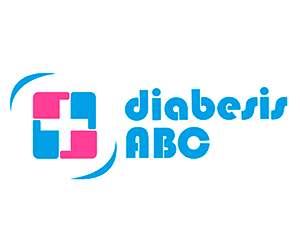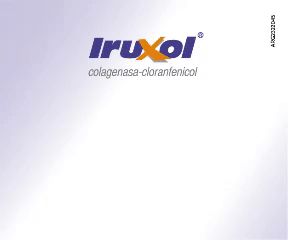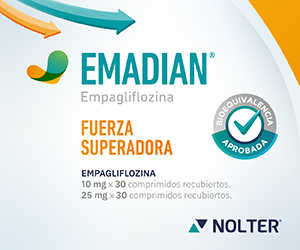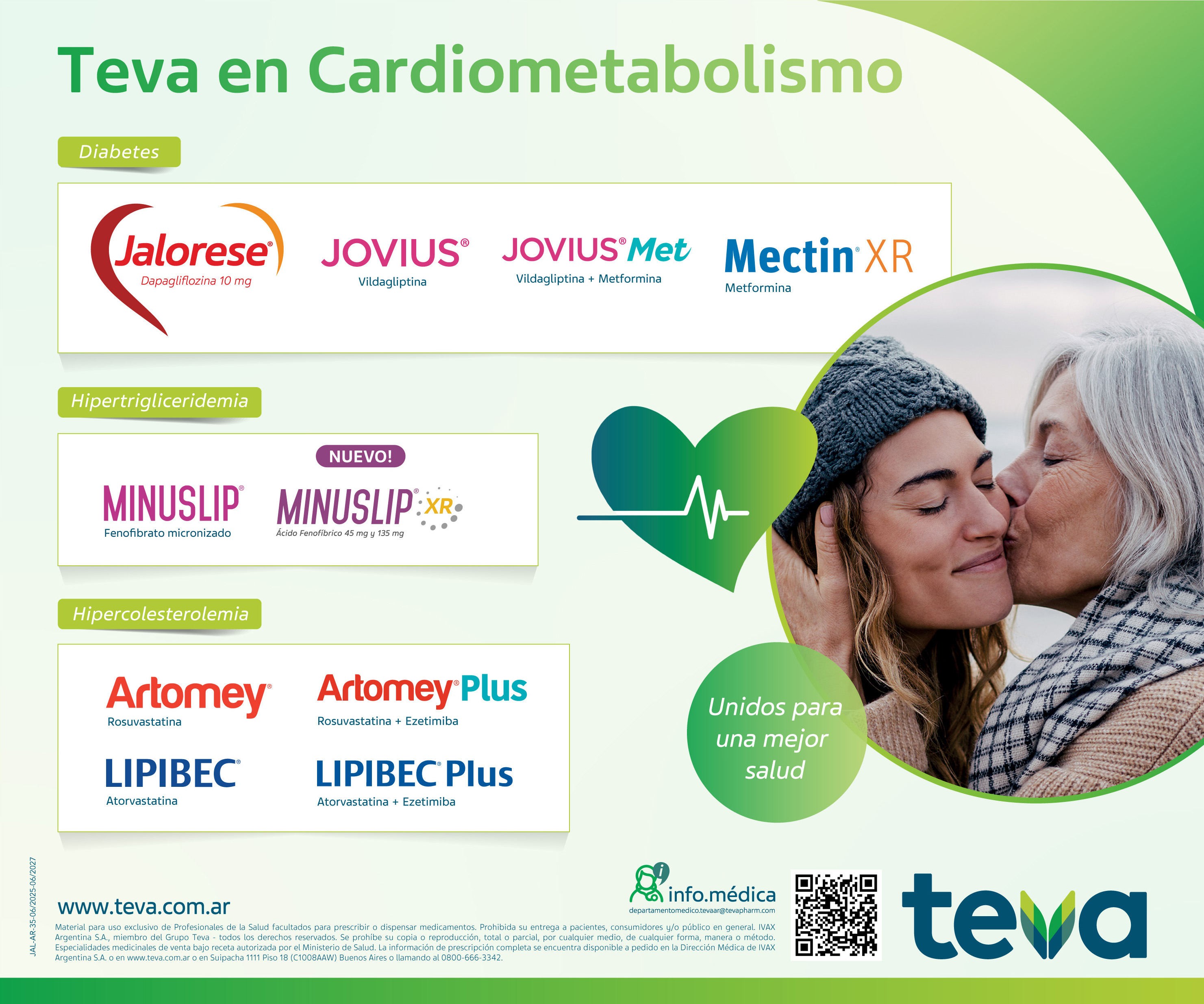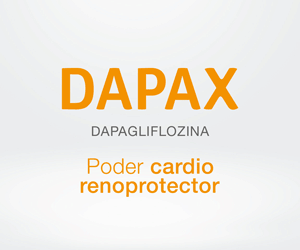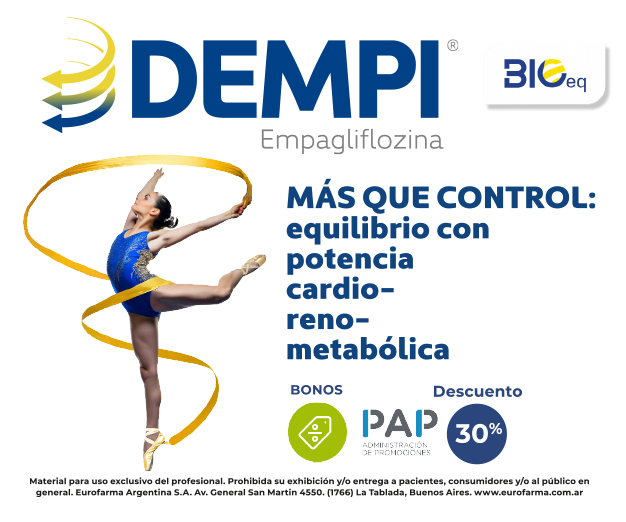Mesa 3: Efectos cardiovasculares de fármacos antidiabéticos
DOI:
https://doi.org/10.47196/diab.v54i2Sup.253Palabras clave:
agentes antidiabéticos, diabetes mellitus, eventos cardiovasculares, estudios de seguridad cardiovascular, antidiabéticos orales, insulinaResumen
Los eventos cardiovasculares representan la mayor complicación de la diabetes. La evidencia sugiere que la metformina mejora los resultados cardiovasculares en pacientes con diabetes, especialmente en el United Kingdom Prospective Diabetes Study (UKPDS) y otros estudios posteriores, por distintos mecanismos.
Hay pocos estudios de seguridad cardiovascular para sulfonilureas aunque no tendrían un perfil seguro a este nivel. La gliclazida parece ser la de mejor performance de las drogas de este grupo. Algo similar ocurre con las meglitinidas, para las cuales los datos indican que no aumentarían el riesgo pero tampoco mejorarían la incidencia de eventos cardiovasculares.
Las tiazolidinodionas son las drogas más cuestionadas, aunque los estudios y metaanálisis son contradictorios no habría dudas que aumentan el riesgo de insuficiencia cardíaca. Los inhibidores de la DPPIV mostraron resultados neutros a excepción de saxagliptina que aumentaría el riesgo de internación por insuficiencia cardiaca.
Existen datos convincentes que los inhibidores de los receptores SGLT-2 a nivel renal y los análogos del GLP-1 intestinal tienen efectos positivos a nivel cardiovascular, con algunas diferencias entre los integrantes de esta familia.
En cuanto a las insulinas, los estudios sugieren que tanto los análogos lentos como rápidos tendrían un mejor perfil cardiovascular, ligado principalmente a la menor incidencia de hipoglucemias severas, que insulina NPH y regular respectivamente.
Citas
I. American Diabetes Association. Cardiovascular disease and risk management: standards of medical care in diabetes. Diabetes Care 2020; 43(Suppl 1): S111-S134. https://doi.org/10.2337/dc20-s010.
II. Dardano A, Miccoli R, Bianchi C, et al. Invited review. Series: Implications of the recent CVOTs in type 2 diabetes. Diabetes Research and Clinical Practice 2020;162: 108-112. https://doi.org/10.1016/j.diabres.2020.108112.
III. Zilov AV, Abdelaziz SI, AlShammary A, et al. Mechanisms of action of metformin with special reference to cardiovascular protection. Diabetes Metabolism Research and Reviews 2019; 35(7):1-12. https://doi.org/10.1002/dmrr.3173.
IV. Varjabedian L, Bourji M, Pourafkari L, Nader ND. Cardioprotection by metformin: beneficial effects beyond glucose reduction. American Journal of Cardiovascular Drugs 2018; 18(3):181-193. https://doi.org/10.1007/s40256-018-0266-3.
V. Vague P. Is metformin more than an oral hypoglycaemic agent? Diabetes & Metabolism 2003; 29(4):6S5-6S7. https://doi.org/10.1016/s1262-3636(03)72782-7.
VI. Grant PJ. Beneficial effects of metformin on haemostasis and vascular function in man. Diabetes & Metabolism 2003; 29(4):6S44-6S52. https://doi.org/10.1016/s1262-3636(03)72787-6.
VII. Nesti L, Natali A. Metformin effects on the heart and the cardiovascular system: a review of experimental and clinical data. Nutrition, Metabolism and Cardiovascular Diseases 2017; 27(8): 657-669. https://doi.org/10.1016/j.numecd.2017.04.009.
VIII. Scheen AJ, Paquot N. Metformin revisited: A critical review of the benefit–risk balance in at-risk patients with type 2 diabetes. Diabetes & Metabolism 2013; 39(3):179-190. https://doi.org/10.1016/j.diabet.2013.02.006.
IX. Ziyrek M, Kahraman S, Ozdemir E, Dogan A. Metformin monotherapy significantly decreases epicardial adipose tissue thickness in newly diagnosed type 2 diabetes patients. Revista Portuguesa de Cardiología 2019; 38(6):419-423. https://doi.org/10.1016/j.repc.2018.08.010.
X. Viollet B, Guigas B, García NS, Leclerc J, Foretz M, Andreelli F. Cellular and molecular mechanisms of metformin: an overview. Clinical Science 2011; 122(6):253-270. https://doi.org/10.1042/cs20110386.
XI. UK Prospective Diabetes Study (UKPDS) Group. Effect of intensive blood-glucose control with metformin on complications in overweight patients with type 2 diabetes (UKPDS 34). The Lancet 1998; 352(9131):854-865. https://doi.org/10.1016/s0140-6736(98)07037-8.
XII. UK Prospective Diabetes Study Group. Tight blood pressure control and risk of macrovascular and microvascular complications in type 2 diabetes: UKPDS 38. BMJ 1998; 317(7160):703-713. https://doi.org/10.1136/bmj.317.7160.703.
XIII. Schäfers RF. Do effects on blood pressure contribute to improved clinical outcomes with metformin? Diabetes & Metabolism 2003; 29(4):6S62-6S70. https://doi.org/10.1016/s1262-3636(03)72789-x.
XIV. Petrie JR, Chaturvedi N, Ford I, et al. Cardiovascular and metabolic effects of metformin in patients with type 1 diabetes (REMOVAL): a double-blind, randomised, placebo-controlled trial. The Lancet Diabetes & Endocrinology 2017; 5(8):597-609. https://doi.org/10.1016/s2213-8587(17)30194-8.
XV. Hong J, Zhang Y, Lai S, et al. Effects of metformin versus glipizide on cardiovascular outcomes in patients with type 2 diabetes and coronary artery disease. Diabetes Care 2012; 36(5):1304-1311. https://doi.org/10.2337/dc12-0719.
XVI. Kooy A, de Jager J, Lehert P, Bets D, Wulffelé MG, Donker AJM, Stehouwer CDA. Long-term effects of metformin on metabolism and microvascular and macrovascular disease in patients with type 2 diabetes mellitus. Archives of Internal Medicine 2009; 169(6):616. https://doi.org/10.1001/archinternmed.2009.20.
XVII. Serra-Sansone MP. Actualización en medicamentos antidiabéticos y riesgo cardiovascular . Rev Urug Cardiol 2016; 31:522-546.
XVIII. Hinnen D, Krueger D. Cardiovascular risks in type 2 diabetes and the interpretation of cardiovascular outcome trials. Diabetes, Metabolic Syndrome and Obesity 2019;12 447-455.
XIX. Yandrapalli S, Jolly G, Horblitt A, et al. Cardiovascular benefits and safety of non-insulin medications used in the treatment of type 2 diabetes mellitus. Postgrad Med 2017 Nov; 129(8):811-821.
XX. Cordiner R, Pearson E. Reflections on the sulphonylurea story: a drug class at risk of extinction or a drug class worth reviving? Diabetes Obes Metab 2019; 21:761-771.
XXI. Meinert CL, Knatterud GL, Prout TE, et al. A study of the effects of hypoglycemic agents on vascular complications in patients with adult-onset diabetes: mortality results. Diabetes 1970; 19(Suppl):789-830.
XXII. Singh S, Bhat J, Wang PH. Cardiovascular effects of antidiabetic medications in type 2 diabetes mellitus. Curr Cardiol Rep 2013 Jan; 15(1):327-335.
XXIII. Fisman EZ, Tenenbaum A. A cardiologic approach to non-insulin antidiabetic pharmacotherapy in patients with heart disease. Cardiovasc Diabetol 2009 Jul 20; 8:38.
XXIV. Cleveland JC, Meldrum DR, Cain BS, et al. Oral sulfonylurea hypoglycemic agents prevent ischemic preconditioning in human myocardium: two paradoxes revisited. Circulation 1997; 96:29-32.
XXV. Tomai F, Crea F, Gaspardone A, et al. Ischemic preconditioning during coronary angioplasty is prevented by glibenclamide, a selective ATP-sensitive K + channel blocker. Circulation 1994; 90:700-5.
XXVI. Klepzig H, Kober G, Matter C, et al. Sulfonylureas and ischaemic preconditioning: a double-blind placebo controlled evaluation of glimeperide and glibenclamide. Eur Heart J 1999; 20:439-46.
XXVII. Lee TM, Chou TF. Impairment of myocardial protection in type 2 diabetic patients. J Clin Endocrinol Metab 2003; 88:531-537.
XXVIII. Scognamiglio R, Avogaro A, Vigili de Kreutzenberg S, et al. Effects of treatment with sulfonylurea drugs or insulin on ischemia-induced myocardial dysfunction in type 2 diabetes. Diabetes 2002; 51:808-812.
XXIX. Tomai F, Danesi A, Ghini AS, et al. Effects of K(ATP) channel blockade by glibenclamide on the warm-up phenomenon. Eur Heart J 1999; 20:196-202.
XXX. Ovünç K. Effects of glibenclamide, a K(ATP) channel blocker, on warm-up phenomenon in type II diabetic patients with chronic stable angina pectoris. Clin Cardiol 2000; 23:535-539.
XXXI. Ferreira BM, Moffa PJ, Falcão A, et al. The effects of glibenclamide, a K(ATP) channel blocker, on the warm-up phenomenon. Ann Noninvasive Electrocardiol 2005; 10:356-362.
XXXII. Bilinska M, Potocka J, Korzeniowska-Kubacka I, et al. Warm-up phenomenon in diabetic patients with stable angina treated with diet or sulfonylureas. Coron Artery Dis 2007; 18:455-462.
XXXIII. Bogaty P, Kingma JG, Robitaille NM, et al. Attenuation of myocardial ischemia with repeated exercise in subjects with chronic stable angina: relation to myocardial contractility, intensity of exercise and the adenosine triphosphate-sensitive potassium channel. J Am Coll Cardiol 1998; 32:1665-1671.
XXXIV. Correa SD, Schaefer S. Blockade of K(ATP) channels with glibenclamide does not abolish preconditioning during demand ischemia. Am J Cardiol 1997; 79:75-78.
XXXV. Rahmi Garcia RM, Rezende PC, Hueb W. Impact of hypoglycemic agents on myocardial ischemic preconditioning. World J Diabetes 2014; 5(3): 258-266 A.
XXXVI. Loubani M, Fowler A, Standen NB, et al. The effect of gliclazide and glibenclamide on preconditioning of the human myocardium. Eur J Pharmacol 2005; 515:142-149.
XXXVII. Panicker GK, Karnad DR, Salvi V, et al. Cardiovascular risk of oral antidiabetic drugs: current evidence and regulatory requirements for new drugs. J Assoc Physicians India. 2012 Jan; 60:56-61.
XXXVIII. Nunes AP, Iglay K, Radican L, et al. Hypoglycaemia seriousness and weight gain as determinants of cardiovascular disease outcomes among sulfonylurea users. Diabetes Obes Metab. 2017 Oct; 19(10):1425-1435.
XXXIX. Patel A, MacMahon S, Chalmers J, et al; ADVANCE Collaborative Group. Intensive blood glucose control and vascular outcomes in patients with type 2 diabetes. N Engl J Med 2008; 358(24):2560-72.
XL. Turnbull FM, Abraira C, et al; Control Group. Intensive glucose control and macrovascular outcomes in type 2 diabetes. Diabetologia 2009; 52:2288-98.
XLI. Gerstein HC, Miller ME, Byington RP, et al; Action to Control Cardiovascular Risk in Diabetes Study Group. Effects of intensive glucose lowering in type 2 diabetes. N Engl J Med 2008; 358:2545-2559.
XLII. Goff DC Jr, Gerstein HC, Ginsberg HN et al.; ACCORD Study Group. Prevention of cardiovascular disease in persons with type 2 diabetes mellitus: current knowledge and rationale for the Action to Control Cardiovascular Risk in Diabetes (ACCORD) trial. Am J Cardiol 2007; 99(12A):4i-20i.
XLIII. UK Prospective Diabetes Study (UKPDS) Group. Intensive blood-glucose control with sulphonylureas or insulin compared with conventional treatment and risk of complications in patients with type 2 diabetes (UKPDS 33). Lancet 1998; 352(9131):837-53.
XLIV. Viberti G, Kahn SE, Greene DA, et al. A diabetes outcome progression trial (ADOPT): an international multicenter study of the comparative efficacy of rosiglitazone, glyburide, and metformin in recently diagnosed type 2 diabetes. Diabetes Care 2002; 25:1737-1743.
XLV. Paneni F, Lüscher TF. Cardiovascular protection in the treatment of type 2 diabetes: a review of cinical trial results across drug classes. Am J Cardiol 2017 Jul 1; 120(1S):S17-S27.
XLVI. Zoungas S, Patel A, Chalmers J, et al; ADVANCE Collaborative Group. Severe hypoglycemia and risks of vascular events and death. N Engl J Med 2010; 363:1410-1418.
XLVII. Rosenstock J, Kahn SE, Johansen OE, et al. Effect of linagliptin vs glimepiride on major adverse cardiovascular outcomes in patients with type 2 diabetes: The CAROLINA Randomized Clinical Trial. JAMA 2019 Sep 19; 322(12):1155-1166. Doi: 10.1001/jama.2019.13772.
XLVIII. Grenet G, Ribault S, Nguyen GB, et al. Glucose control safety & efficacy in type 2 diabetes, a systematic review and NETwork meta-analysis. PLoS One. 2019; 14(6):e0217701.
XLIX. Varvaki-Rados D, Catan-Pinto L, Reck-Remonti L, et al. The association between sulfonylurea use and all-cause and cardiovascular mortality: a meta-analysis with trial sequential analysis of randomized clinical trials. PLoS Med 2016; 13:e1001992.
L. Hemmingsen B, Schroll JB, Lund SS, et al. Sulphonylurea monotherapy for patients with type 2 diabetes mellitus. Cochrane Database Syst Rev 2013 Apr 30; 4:CD009008.
LI. Zhuang XD, He X, Yang DY, et al. Comparative cardiovascular outcomes in the era of novel anti-diabetic agents: a comprehensive network meta-analysis of 166,371 participants from 170 randomized controlled trials. Cardiovasc Diabetol 2018 Jun 5; 17(1):79.
LII. Bain S, Druyts E, Balijepalli C, et al. Cardiovascular events and all-cause mortality associated with sulfonylureas compared with other antihyperglycaemic drugs: a Bayesian meta analysis of survival data. Diabetes Obes Metab 2017 Mar; 19(3):329-335.
LIII. Monami M, Genovese S, Mannucci E. Cardiovascular safety of sulfonylureas: a meta-analysis of randomized clinical trials. Diabetes Obes Metab 2013; 15(10):938-953.
LIV. Powell R, Christiansen C, Miller D. Meta-analysis of sulfonylurea therapy on long-term risk of mortality and cardiovascular events compared to other oral glucose-lowering treatments. Diabetes Ther 2018 Aug; 9(4):1431-1440.
LV. Roumie CL, Hung AM, Greevy RA, et al. Comparative effectiveness of sulfonylurea and metformin monotherapy on cardiovascular events in type 2 diabetes mellitus: a cohort study. Ann Intern Med 2012 Nov 6; 157(9):601-610.
LVI. Douros A, Yin H, Yun Yu O, et al. Pharmacologic differences of sulfonylureas and the risk of adverse cardiovascular and hypoglycemic events. Diabetes Care 2017; 40:1506-1513.
LVII. Pantalone KM, Kattan MW, Yu C, et al. The risk of overall mortality in patients with type 2 diabetes receiving glipizide, glyburide, or glimepiride monotherapy: a retrospective analysis. Diabetes Care 2010 Jun; 33(6):1224-1229.
LVIII. Pantalone KM, et al. Increase in overall mortality risk in patients with type 2 diabetes receiving glipizide, glyburide or glimeperide monotherapy versus metformin: a retrospective analysis. Diabetes Obes Metab 2012; 14:803-9.
LIX. Simpson SH, Lee J, Choi S, Vandermeer B, Abdelmoneim AS, Featherstone TR. Mortality risk among sulfonylureas: a systematic review and network meta-analysis. Lancet Diabetes Endocrinol 2015; 3(1):43-51.
LX. Evans JMM, Ogston SA, Reimann F, et al. No differences in mortality between users on pancreatic-specific and non-pancreatic specific sulfonylureas: a cohort analysis. Diabetes Obes Metab 2008; 10:350-2.
LXI. Andersson C, Gislason GH, Jorgensen JH, et al. Comparable longterm mortality risk associated with individual sulfonylureas in diabetes patients with heart failure. Diabetes Res Clin Pr 2011; 94:119-25.
LXII. Huang Y, Abdelmoneim AS, Light P, et al. Comparative cardiovascular safety of insulin secretagogues following hospitalization for ischemic heart disease among type 2 diabetes patients: a cohort study. J Diabetes Comp 2015; 29:196-202.
LXIII. Juurlink DN, Gomes T, Shah BR, Mamdani MM. Adverse cardiovascular events during treatment with glyburide (glibenclamide) or gliclazide in a high-risk population. DiabetMed 2012 Dec; 29(12):1524-1528.
LXIV. Eriksson JW, Bodegard J, Nathanson D, et al. Sulphonylurea compared to DPP-4 inhibitors in combination with metformin carries increased risk of severe hypoglycemia, cardiovascular events, and all-cause mortality. Diabetes Res Clin Pract 2016 Jul; 117:39-47.
LXV. Monami M, Balzi D, Lamanna C, Barchielli A, et al. Are sulphonylureas all the same? a cohort study on cardiovascular and cancer-related mortality. Diabetes Metab Res Rev 2007; 23(6):479-84.
LXVI. Abdelmoneim AS, Eurich DT, Senthilselvan A, et al. Dose-response relationship between sulfonylureas and major adverse cardiovascular events in elderly patients with type 2 diabetes. Pharmacoepidemiol Drug Saf 2016 Oct; 25(10):1186-1195.
LXVII. Hung YC, Lin CC, Wang TY, Chang MP, Sung FC, Chen CC. Oral hypoglycaemic agents and the development of non-fatal cardiovascular events in patients with type 2 diabetes mellitus. Diabetes Metab Res Rev 2013; 29(8):673-9.
LXVIII. Sadikot S, Mogensen CE. Risk of coronary artery disease associated with initial sulfonylurea treatment of patients with type 2 diabetes: a matched case–control study. Diabetes Res Clin Pr 2008; 82:391-5.
LXIX. Khalangot M, Tronko M, Kravchenko V, Kovtun V. Glibenclamide-related excess in total and cardiovascular mortality risks: data from large Ukrainian observational cohort study. Diabetes Res Clin Pract 2009; 86(3):247-53.
LXX. Simpson SH, Majumdar SR, Tsuyuki RT, Eurich DT, Johnson JA. Dose-response relation between sulfonylurea drugs and mortality in type 2 diabetes mellitus: a population-based cohort study. CMAJ 2006 Jan 17; 174(2):169-174.
LXXI. Gangji AS, Cukierman T, Gerstein HC, et al. A systematic review and meta-analysis of hypoglycemia and cardiovascular events. Diabetes Care 2007; 30:389-94.
LXXII. Johnsen SP, Monster TB, Olsen ML, et al. Risk and short-term prognosis of myocardial infarction among users of antidiabetic drugs. Am J Ther 2006; 13(2):134-40.
LXXIII. Zeller M, Danchin N, Simon D, et al; French Registry of Acute ST-Elevation and Non-ST-Elevation. Impact of type of preadmission sulfonylureas on mortality and cardiovascular outcomes in patients with diabetes with acute myocardial infarction. J Clin Endocrinol Metab 2010 Nov; 95(11): 4993-5002.
LXXIV. Schramm TK, Gislason GH, Vaag A, et al. Mortality and cardiovascular risk associated with different insulin secretagogues compared with metformin in type 2 diabetes, with or without a previous myocardial infarction: a nationwide study. Eur Heart J. 2011 Aug; 32(15):1900-1908. Erratum in: Eur Heart J. 2012 May;33(10):1183.
LXXV. Jørgensen CH, Gislason GH, Andersson C, Ahlehoff O, Charlot M, Schramm TK, et al. Effects of oral glucose-lowering drugs on long term outcomes in patients with diabetes mellitus following myocardial infarction not treated with emergent percutaneous coronary intervention: a retrospective nationwide cohort study. Cardiovasc Diabetol 2010; 9:54.
LXXVI. Johansen OE, Birkeland KI. Defining the role of repaglinide in the management of type 2 diabetes mellitus: a review. Am J Cardiovasc Drugs 2007;7(5):319-335.
LXXVII. Sansone MP. Actualización en medicamentos antidiabéticos y riesgo cardiovascular. Rev Urug Cardiol 2016; 31:522-546.
LXXVIII. Azimova K, San Juan Z, Mukherjee D. Cardiovascular safety profile of currently available diabetic drugs. Ochsner J 2014;14(4):616–632.
LXXIX. Derosa G, Mugellini A, Ciccarelli L, et al. Comparison between repaglinide and glimepiride in patients with type 2 diabetes mellitus: a one-year, randomized, double-blind assessment of metabolic parameters and cardiovascular risk factors. Clin Ther 2003 Feb; 25(2):472-84.
LXXX. Esposito K, Giugliano D, Nappo F, et al. Regression of carotid atherosclerosis by control of postprandial hyperglycemia in type 2 diabetes mellitus. Circulation 2004 Jul 13; 110 (2):214-9.
LXXXI. Yngen M, Ostenson CG, Hjemdahl P, Wallén NH. Meal-induced platelet activation in Type 2 diabetes mellitus: effects of treatment with repaglinide and glibenclamide. Diabet Med 2006 Feb; 23(2):134-40.
LXXXII. Manzella D, Grella R, Abbatecola AM, Paolisso G. Repaglinide administration improves brachial reactivity in type 2 diabetic patients. Diabetes Care 2005 Feb; 28(2): 366-371.
LXXXIII. Rizzo MR, Barbieri M, Grella R, et al. Repaglinide has more beneficial effect on cardiovascular risk factors than glimepiride: data from meal-test study. Diabetes Metab 2005 Jun; 31(3 Pt 1):255-60.
LXXXIV. Scheen AJ. NAVIGATOR: a trial of prevention of cardiovascular complications and type 2 diabetes with valsartan and/or nateglinide. Rev Med Liege 2010 Apr; 65(4): 217-223.
LXXXV. Holman RR, Haffner SM, McMurray JJ, et al; NAVIGATOR Study Group. Effect of nateglinide on the incidence of diabetes and cardiovascular events. N Engl J Med 2010 Apr 22; 362(16):1463-1476. Erratum in: N Engl J Med 2010 May 6; 362(18):1748.
LXXXVI. Cioffi G, Faggiano P, Lucci D, et al. Left ventricular dysfunction and outcome at two-year follow-up in patients with type 2 diabetes: The DYDA study. Diabetes Res Clin Pract 2013 Aug; 101(2):236-242.
LXXXVII. Ekström N, Svensson AM, Miftaraj M, et al. Cardiovascular safety of glucose-lowering agents as add-on medication to metformin treatment in type 2 diabetes: report from the Swedish National Diabetes Register. Diabetes Obes Metab 2016 Oct; 18(10):990-8.
LXXXVIII. Yki-Järvinen H. Thiazolidinediones. N Engl J Med 2004; 351:1106.
LXXXIX. Vidal-Puig AJ, Considine RV, Jimenez-Liñan M, et al. Peroxisome proliferator-activated receptor gene expression in human tissues. Effects of obesity, weight loss, and regulation by insulin and glucocorticoids. J Clin Invest 1997; 99:2416.
XC. Nissen SE, Wolski K. Effect of rosiglitazone on the risk of myocardial infarction and death from cardiovascular causes. N Engl J Med 2007; 356:2457.
XCI. Rosen CJ. The rosiglitazone story-lessons from an FDA Advisory Committee meeting. N Engl J Med 2007; 357:844.
XCII. Singh S, Loke YK, Furberg CD. Long-term risk of cardiovascular events with rosiglitazone: a meta-analysis. JAMA 2007; 298:1189.
XCIII. Nissen SE, Wolski K. Rosiglitazone revisited: an updated meta-analysis of risk for myocardial infarction and cardiovascular mortality. Arch Intern Med 2010; 170:1191.
XCIV. Cobitz A, Zambanini A, Sowell M, et al. A retrospective evaluation of congestive heart failure and myocardial ischemia events in 14,237 patients with type 2 diabetes mellitus enrolled in 42 short-term, double-blind, randomized clinical studies with rosiglitazone. Pharmacoepidemiol Drug Saf 2008; 17:769.
XCV. Richter B, Bandeira-Echtler E, Bergerhoff K, et al. Rosiglitazone for type 2 diabetes mellitus. Cochrane Database Syst Rev 2007; CD006063.
XCVI. Diamond GA, Bax L, Kaul S. Uncertain effects of rosiglitazone on the risk for myocardial infarction and cardiovascular death. Ann Intern Med 2007; 147:578.
XCVII. Home PD, Pocock SJ, Beck-Nielsen H, et al. Rosiglitazone evaluated for cardiovascular outcomes in oral agent combination therapy for type 2 diabetes (RECORD): a multicentre, randomised, open-label trial. Lancet 2009; 373:2125.
XCVIII. Goldberg RB, Kendall DM, Deeg MA, et al. A comparison of lipid and glycemic effects of pioglitazone and rosiglitazone in patients with type 2 diabetes and dyslipidemia. Diabetes Care 2005; 28:1547.
XCIX. Graham DJ, Ouellet-Hellstrom R, MaCurdy TE, Ali F, Sholley C, Worrall C, Kelman JA. Risk of acute myocardial infarction, stroke, heart failure, and death in elderly medicare patients treated wth rosiglitazone or pioglitazone. JAMA 2010; 304(4):411. https://doi.org/10.1001/jama.2010.920.
C. The BARI 2D Study Group. A randomized trial of therapies for type 2 diabetes and coronary artery disease. New England Journal of Medicine 2009; 360(24):2503-2515. https://doi.org/10.1056/nejmoa0805796.
CI. Dormandy JA, Charbonnel B, Eckland DJ, et al. Secondary prevention of macrovascular events in patients with type 2 diabetes in the PROactive Study (PROspective pioglitAzone Clinical Trial In macroVascular Events): a randomised controlled trial. Lancet 2005; 366:1279.
CII. Inzucchi SE, Furie KL. The IRIS (Insulin Resistance Intervention after Stroke) trial: A new perspective on pioglitazone. Journal of Diabetes 2016; 8(5):607-609. https://doi.org/10.1111/1753-0407.12399.
CIII. American Diabetes Association. Pharmacologic approaches to glycemic treatment: standards of medical care in diabetes 2020. Diabetes Care 2019; 43(Suppl 1): S98-S110. https://doi.org/10.2337/dc20-s009.
CIV. Vella A. Mechanism of action of DPP-4 inhibitors new insights. The Journal of Clinical Endocrinology & Metabolism 2012; 97(8):2626-2628. https://doi.org/10.1210/jc.2012-2396.
CV. Scirica BM, Bhatt DL, Braunwald E, et al. Saxagliptin and cardiovascular outcomes in patients with type 2 diabetes mellitus. N Engl J Med 2013; 369:1317-26.
CVI. White WB, Cannon CP, Heller SR, et al. Alogliptin after acute coronary syndrome in patients with type 2 diabetes. N Engl J Med 2013; 369:1327-35.
CVII. Green JB, Bethel MA, Armstrong PW, et al. Effect of sitagliptin on cardiovascular outcomes in type 2 diabetes. N Engl J Med 2015; 373:232-42.
CVIII. Ou SM, Shih CJ, Chao PW, et al. Effects on clinical outcomes of adding dipeptidyl peptidase-4 inhibitors vs sulfonylureas to metformin therapy in patients with type 2 diabetes mellitus. Ann Intern Med 2015; 163(9):663.
CIX. Toh S, Hampp C, Reichman ME, et al. Risk for hospitalized heart failure among new users of saxagliptin, sitagliptin, and other antihyperglycemic drugs: a retrospective cohort Sstudy. Ann Intern Med 2016; 164(11):705.
CX. Rehman MB, Tudrej BV, Soustre J, et al. Efficacy and safety of DPP-4 inhibitors in patients with type 2 diabetes: Meta-analysis of placebo-controlled randomized clinical trials. Diabetes Metab 2017 Feb; 43(1):48-58.
CXI. Kim KJ, Choi J, Lee J. Dipeptidyl peptidase-4 inhibitor compared with sulfonylurea in combination with metformin: cardiovascular and renal outcomes in a propensity-matched cohort study. Cardiovasc Diabetol 2019; 18:28.
CXII. Packer M. Do DPP-4 inhibitors cause heart failure events by promoting adrenergically mediated cardiotoxicity? Clues from laboratory models and clinical trials. Circ Res 2018; 122:928-32.
CXIII. Rosenstock J, Perkovic V, Johansen OE, et al. Effect of linagliptin vs placebo on major cardiovascular events in adults with type 2 diabetes and high cardiovascular and renal risk: the CARMELINA randomized clinical trial. JAMA 2019; 321:69-79.
CXIV. Marx N, Rosenstock J, Kahn SE, et al. Design and baseline characteristics of the CARdiovascular outcome trial of LINAgliptin versus glimepiride in type 2 diabetes (CAROLINA®). Diab Vasc Dis Res 2015; 12:164-74.
CXV. McMurray JJ, Ponikowksi P, Bolli GB, et al. Vildagliptin in Ventricular Dysfunction Diabetes Trial (VIVIDD). Eur J Heart Fail 2013; 12(suppl):1.
CXVI. Kishimoto M. Teneligliptin: a DPP-4 inhibitor for the treatment of type 2 diabetes. Diabetes Metab Syndr Obes Targets Ther 2013; 6:187-95.
CXVII. National cerebral and cardiovascular center. Teneligliptin on the progressive left ventricular diastolic dysfunction with type 2 diabetes mellitus study. clinicaltrials.gov NCT02449330. https://clinicaltrials.gov/ct2/show/NCT02449330?term=TOPLEVEL&rank=1. Acceso: 14/19/2019.
CXVIII. Mannucci E, Mosenzon O, Avogaro A. Analyses of results from cardiovascular safety trials with DPP-4 inhibitors: cardiovascular outcomes, predefined safety outcomes, and pooled analysis and meta-analysis. Diabetes Care 2016; 39(Suppl 2):S196-204.
CXIX. Monami M, Ahren B, Dicembrini I, Mannucci E. Dipeptidyl peptidase-4. inhibitors and cardiovascular risk: a meta-analysis of randomized clinical trials. Diabetes Obes Metab 2013; 15:112-20.
CXX. Chilton RJ. Effects of sodium-glucose cotransporter-2 inhibitors on the cardiovascular and renal complications of type 2 diabetes. Diabetes, Obesity and Metabolism 2019; 22(1):16-29. https://doi.org/10.1111/dom.13854.
CXXI. Giugliano D, Esposito K. Class effect for SGLT-2 inhibitors: a tale of 9 drugs. Cardiovascular Diabetology 2019; 18(1):1-4. https://doi.org/10.1186/s12933-019-0899-9.
CXXII. John M, GopinathD, Jagesh R. Sodium-glucose cotransporter 2 inhibitors with insulin in type 2 diabetes: clinical perspectives. Indian Journal of Endocrinology and Metabolism 2016; 20(1):22-31. https://doi.org/10.4103/2230-8210.172268.
CXXIII. Thomas MC, Cherney DZI. The actions of SGLT2 inhibitors on metabolism, renal function and blood pressure. Diabetologia 2018; 61(10):2098-2107. https://doi.org/10.1007/s00125-018-4669-0.
CXXIV. Lupsa BC, Inzucchi SE. Use of SGLT2 inhibitors in type 2 diabetes: weighing the risks and benefits. Diabetologia 2018; 61(10):2118-2125. https://doi.org/10.1007/s00125-018-4663-6.
CXXV. Vardeny O, Vaduganathan M. Practical guide to prescribing sodium-glucose cotransporter 2 inhibitors for cardiologists. JACC Heart Failure 2019; 7(2):169-172. https://doi.org/10.1016/j.jchf.2018.11.013.
CXXVI. Evans M, Morgan AR, Yousef Z. What next after metformin? Thinking beyond glycaemia: are SGLT-2 iInhibitors the answer? Diabetes Therapy 2019; 10(5):1719-1731. https://doi.org/10.1007/s13300-019-00678-z.
CXXVII. Lehrke M. SGLT-2 Inhibition. Journal of the American College of Cardiology 2019; 73(15)-1945-1947. https://doi.org/10.1016/j.jacc.2019.02.023.
CXXVIII. Kaplan A, Abidi E, El-Yazbi A, et al. Direct cardiovascular impact of SGLT-2 inhibitors: mechanisms and effects. Heart Failure Reviews 2018; 23(3):419-437. https://doi.org/10.1007/s10741-017-9665-9.
CXXIX. Garcia-Ropero A, Santos-Gallego CG, Zafar MU, Badimon JJ. Metabolism of the failing heart and the impact of SGLT-2 inhibitors. Expert Opinion on Drug Metabolism & Toxicology 2019; 15(4):275-285. https://doi.org/10.1080/17425255.2019.1588886.
CXXX. Verma S, McMurray JJV. SGLT-2 inhibitors and mechanisms of cardiovascular benefit: a state-of-the-art review. Diabetologia 2018; 61(10):2108-2117. https://doi.org/10.1007/s00125-018-4670-7.
CXXXI. Zinman B, Wanner C, Lachin JM, et al. Empagliflozin, cardiovascular outcomes, and mortality in type 2 diabetes. New England Journal of Medicine 2015; 373(22):2117-2128. https://doi.org/10.1056/nejmoa1504720.
CXXXII. Wiviott SD, Raz I, Bonaca MP, et al. Dapagliflozin and cardiovascular outcomes in type 2 diabetes. New England Journal of Medicine 2019; 380(4):347-357. https://doi.org/10.1056/nejmoa1812389.
CXXXIII. Neal B, Perkovic V, Mahaffey KW, et al. Canagliflozin and cardiovascular and renal events in type 2 diabetes. New England Journal of Medicine 2017; 377(7):644-657. https://doi.org/10.1056/nejmoa1611925.
CXXXIV. Mahaffey KW, Jardine MJ, Bompoint S, et al. Canagliflozin and cardiovascular and renal outcomes in type 2 diabetes mellitus and chronic kidney disease in primary and secondary cardiovascular prevention groups. Circulation 2019; 140(9):739-750. https://doi.org/10.1161/circulationaha.119.042007.
CXXXV. Gallwitz B. The cardiovascular benefits associated with the use of sodium-glucose cotransporter 2 inhibitors. Real-world data. European Endocrinology 2018; 14(1):17-23. https://doi.org/10.17925/ee.2018.14.1.17.
CXXXVI. Zelniker TA, Wiviott SD, Raz I, et al. SGLT-2 inhibitors for primary and secondary prevention of cardiovascular and renal outcomes in type 2 diabetes: a systematic review and meta-analysis of cardiovascular outcome trials. The Lancet 2019; 393(10166):31-39. https://doi.org/10.1016/s0140-6736(18)32590-x.
CXXXVII. Sinha B, Ghosal S. Sodium-glucose cotransporter-2 inhibitors (SGLT-2i) reduce hospitalization for heart failure only and have no effect on atherosclerotic cardiovascular events: a meta-Analysis. Diabetes Therapy 2019; 10(3):891-899. https://doi.org/10.1007/s13300-019-0597-3.
CXXXVIII. Cavallari I, Maddaloni E. Cardiovascular effects of SGLT-2 inhibitors: What we have learned from cardiovascular outcome trials and what we still need to understand. Diabetes/Metabolism Research and Reviews 2019; 35(4):e3124. https://doi.org/10.1002/dmrr.3124.
CXXXIX. Cosentino F, Grant PJ, Aboyans V, et al. 2019 ESC Guidelines on diabetes, pre-diabetes, and cardiovascular diseases developed in collaboration with the EASD. European Heart Journal 2019; 41(2):255-323. https://doi.org/10.1093/eurheartj/ehz486.
CXL. Aroda VR. A review of GLP-1 receptor agonists: evolution and advancement, through the lens of randomised controlled trials. Diabetes, Obesity and Metabolism 2018; 20:22-33. https://doi.org/10.1111/dom.13162.
CXLI. Pfeffer MA, Claggett B, Diaz R, et al. Lixisenatide in patients with type 2 diabetes and acute coronary syndrome. New England Journal of Medicine 2015; 373(23):2247-2257. https://doi.org/10.1056/nejmoa1509225.
CXLII. Mentz RJ, Bethel MA, Merrill P, et al. Effect of once-weekly exenatide on clinical outcomes according to baseline risk in patients with type 2 diabetes mellitus: insights from the EXSCEL trial. Journal of the American Heart Association 2018; 7(19):1-26. https://doi.org/10.1161/jaha.118.009304.
CXLIII. American Diabetes Association. Cardiovascular disease and risk management: standards of medical care in diabetes-2019. Diabetes Care 2018; 42(Supplement 1):S103-S123. https://doi.org/10.2337/dc19-s010.
CXLIV. Marso SP, Daniels GH, Brown-Frandsen K, et al. Liraglutide and cardiovascular outcomes in type 2 diabetes. New England Journal of Medicine 2016; 375(4):311-322. https://doi.org/10.1056/nejmoa1603827.
CXLV. Hernández AF, Green JB, Janmohamed S, et al. Albiglutide and cardiovascular outcomes in patients with type 2 diabetes and cardiovascular disease (Harmony Outcomes): a double-blind, randomised placebo-controlled trial. Lancet. 2018; 392:1519-1529.
CXLVI. Marso SP, Bain SC, Consoli A, et al. Semaglutide and cardiovascular outcomes in patients with type 2 diabetes. New England Journal of Medicine 2016; 375(19):1834-1844. https://doi.org/10.1056/nejmoa1607141.
CXLVII. Bain SC, Mosenzon O, Arechavaleta R, et al. Cardiovascular safety of oral semaglutide in patients with type 2 diabetes: Rationale, design and patient baseline characteristics for the PIONEER 6 trial. Diabetes, Obesity and Metabolism 2018; 21(3):499-508. https://doi.org/10.1111/dom.13553.
CXLVIII. Husain M, Birkenfeld AL, Donsmark M, Dungan K, et al. Oral semaglutide and cardiovascular outcomes in patients with type 2 diabetes. New England Journal of Medicine 2019; 381(9):841-851. https://doi.org/10.1056/nejmoa1901118.
CXLIX. Gerstein HC, Colhoun HM, Dagenais GR, et al. Design and baseline characteristics of participants in the researching cardiovascular events with a weekly incretin in diabetes (REWIND) trial on the cardiovascular effects of dulaglutide. Diabetes, Obesity and Metabolism 2017; 20(1):42-49. https://doi.org/10.1111/dom.13028.
CL. Gerstein HC, Colhoun HM, Dagenais GR, et al. Dulaglutide and cardiovascular outcomes in type 2 diabetes (REWIND): a double-blind, randomised placebo-controlled trial. Lancet 13 2019;394(10193):121-130.
CLI. Donner T, Joseph J. Long-term insulin glargine therapy in type 2 diabetes mellitus: a focus on cardiovascular outcomes. Vascular Health and Risk Management 2015; 107. https://doi.org/10.2147/vhrm.s50286.
CLII. Laranjeira FO, de Andrade KRC, Figueiredo ACMG, et al. Long-acting insulin analogues for type 1 diabetes: an overview of systematic reviews and meta-analysis of randomized controlled trials. PLOS ONE 2018; 13(4):e0194801. https://doi.org/10.1371/journal.pone.0194801.
CLIII. Mannucci E, Giannini S, Dicembrini I. Cardiovascular effects of basal insulins. Drug, Healthcare and Patient Safety 2015; 113. https://doi.org/10.2147/dhps.s43300.
CLIV. Frier BM, Russell-Jones D, Heise T. A comparison of insulin detemir and neutral protamine Hagedorn (isophane) insulin in the treatment of diabetes: a systematic review. Diabetes, Obesity and Metabolism 2013; 15(11):978-986. https://doi.org/10.1111/dom.12106.
CLV. Gerstein HC, Bosch J, Dagenais GR, et al. Basal insulin and cardiovascular and other outcomes in dysglycemia. New England Journal of Medicine 2012; 367(4):319-328. https://doi.org/10.1056/nejmoa1203858.
CLVI. Marso SP, McGuire DK, Zinman B, et al. Efficacy and safety of degludec versus glargine in type 2 diabetes. New England Journal of Medicine 2017; 377(8):723-732. https://doi.org/10.1056/nejmoa1615692.
CLVII. Cammarota S, Falconio LM, Bruzzese D, et al. Lower rate of cardiovascular complications in patients on bolus insulin analogues: a retrospective population-based cohort study. PLoS ONE 2013; 8(11):e79762. https://doi.org/10.1371/journal.pone.0079762.
CLVIII. Raskin P, Fordan S. Vascular effects of rapid-acting insulin analogs in the diabetic patient: a review. Vascular Health and Risk Management 2009; 225. https://doi.org/10.2147/vhrm.s3402.
CLIX. Svensson AM, Miftaraj M, Franzén S, Eliasson B. Clinical effects, cardiovascular and renal outcomes associated with rapid-acting insulin analogs among individuals with type 2 diabetes: a nation-wide observational cohort study. Clinical Diabetes and Endocrinology 2017; 3(1):1-8. https://doi.org/10.1186/s40842-017-0043-2.
CLX. Russell-Jones D, Bode BW, De Block C, et al. Fast-acting insulin aspart improves glycemic control in basal-bolus treatment for type 1 diabetes: results of a 26-week multicenter, active-controlled, treat-to-target, randomized, parallel-group trial (onset 1). Diabetes Care 2017; 40(7):943-950. https://doi.org/10.2337/dc16-1771.
CLXI. Bowering K, Case C, Harvey J, et al. Faster aspart vs insulin aspart as part of a basal-bolus regimen in inadequately controlled type 2 diabetes: the onset 2 trial. Diabetes Care 2017; 40(7):951-957. https://doi.org/10.2337/dc16-1770.
CLXII. Rodbard HW, Tripathy D, Vidrio-Velázquez M, et al. Adding fast-acting insulin aspart to basal insulin significantly improved glycaemic control in patients with type 2 diabetes: A randomized, 18-week, open-label, phase 3 trial (onset 3). Diabetes, Obesity and Metabolism 2017; 19(10):1389-1396. https://doi.org/10.1111/dom.12955
Descargas
Publicado
Cómo citar
Número
Sección
Licencia

Esta obra está bajo una licencia internacional Creative Commons Atribución-NoComercial-SinDerivadas 4.0.
Dirección Nacional de Derecho de Autor, Exp. N° 5.333.129. Instituto Nacional de la Propiedad Industrial, Marca «Revista de la Sociedad Argentina de Diabetes - Asociación Civil» N° de concesión 2.605.405 y N° de disposición 1.404/13.
La Revista de la SAD está licenciada bajo Licencia Creative Commons Atribución – No Comercial – Sin Obra Derivada 4.0 Internacional.
Por otra parte, la Revista SAD permite que los autores mantengan los derechos de autor sin restricciones.








